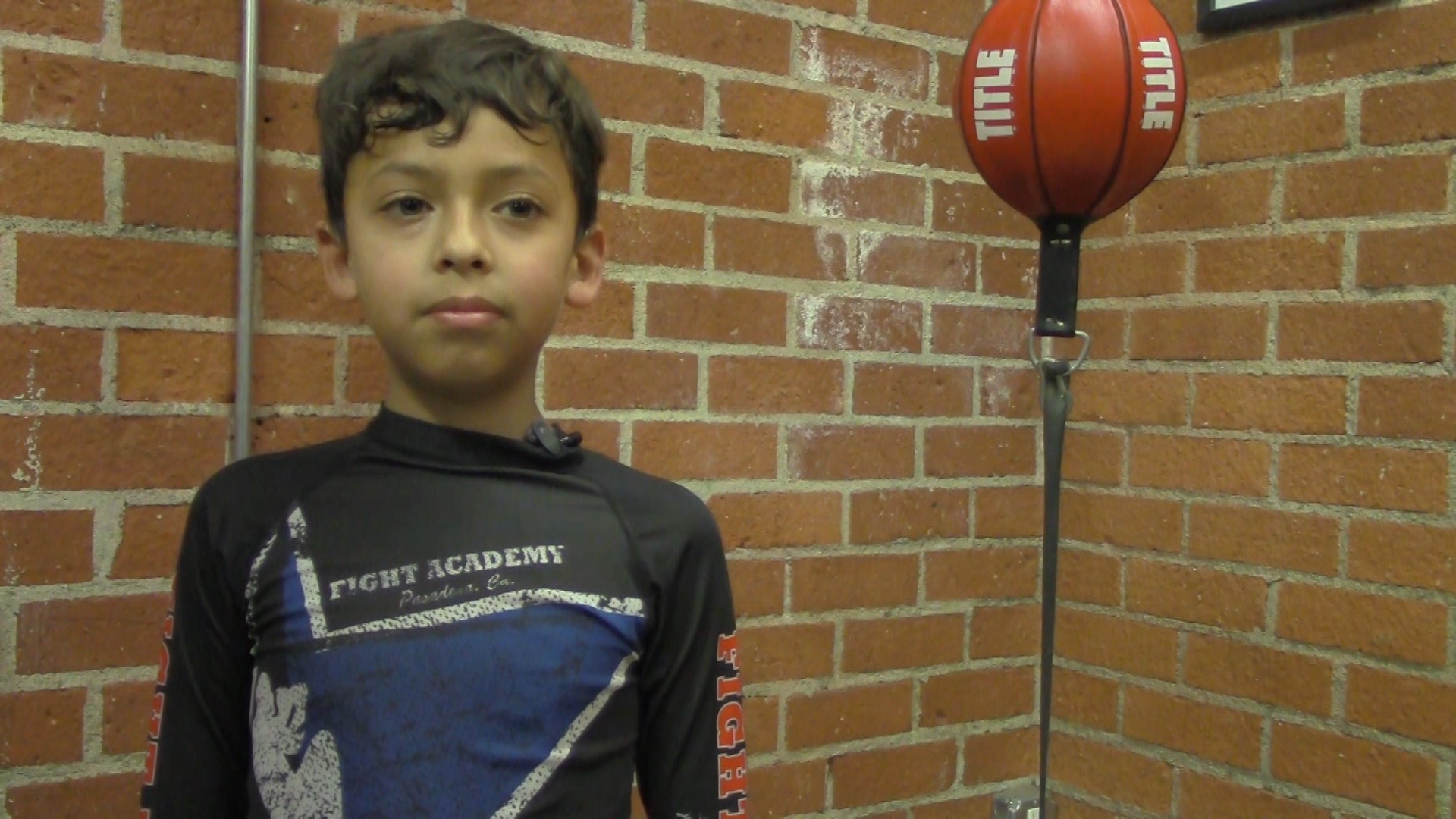
Derek Vargas
Vargas, 9, has been competing for two years and is preparing for his next competition in January.
Children as young as 8-years-old compete in youth pankration, a modified version of mixed martial arts.
By Ivana Nguyen

Vargas, 9, has been competing for two years and is preparing for his next competition in January.
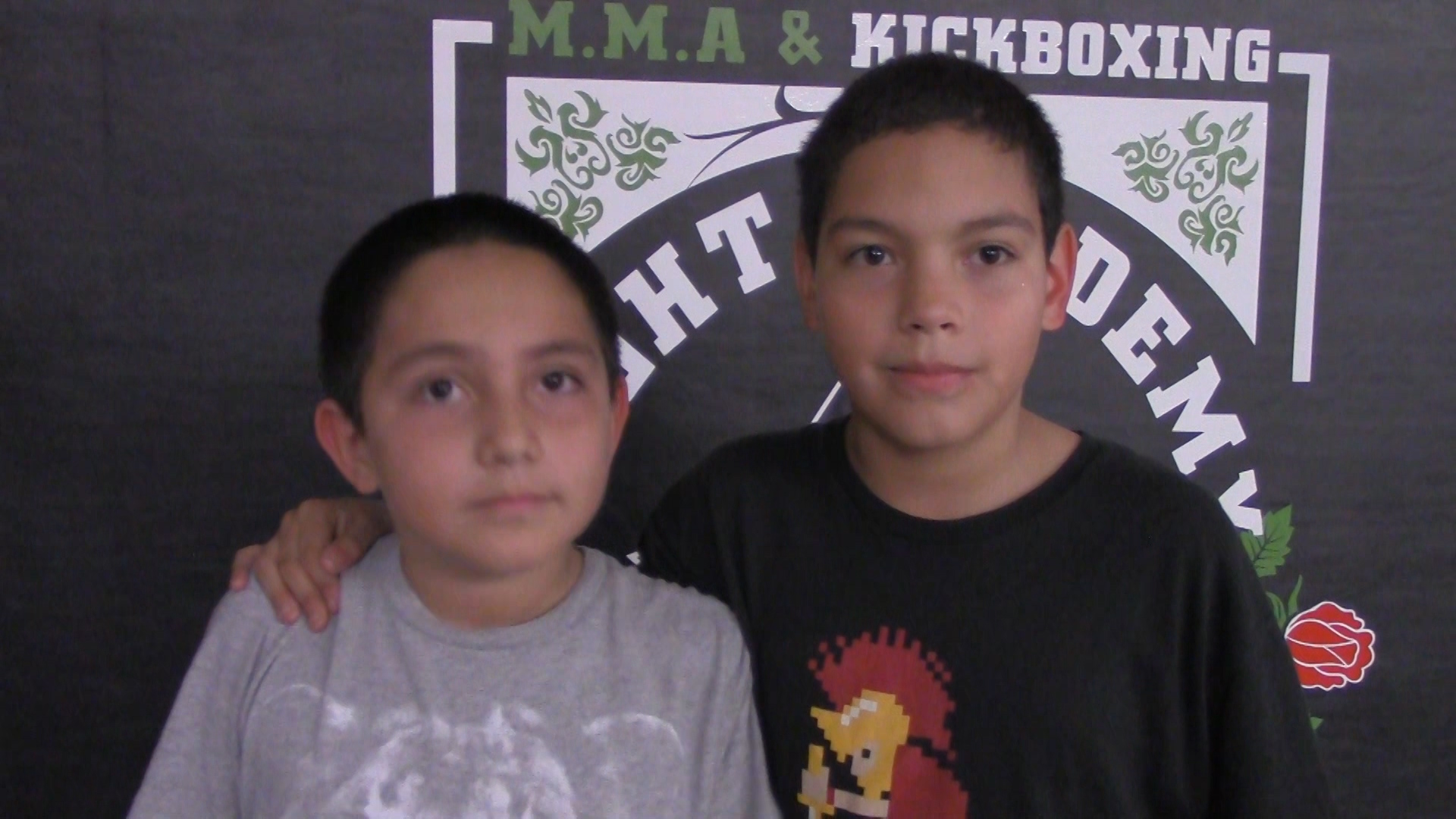
Aden, 12, and Andres, 8, are beginners in the sport.They started in July and have loved the sport ever since.
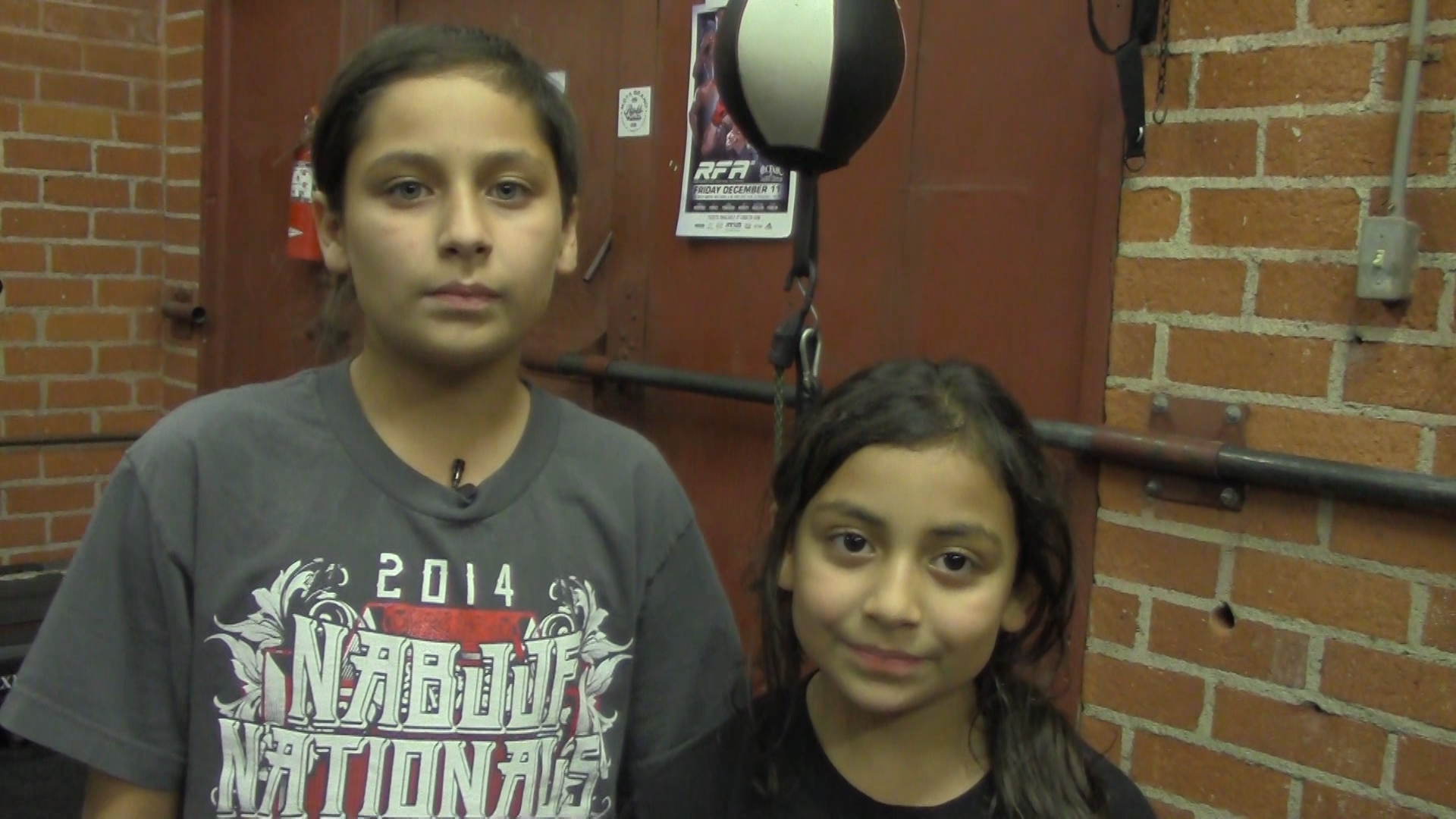
Georgia, 10, and Stella, 7, have both been training and competing in youth pankration for four years.
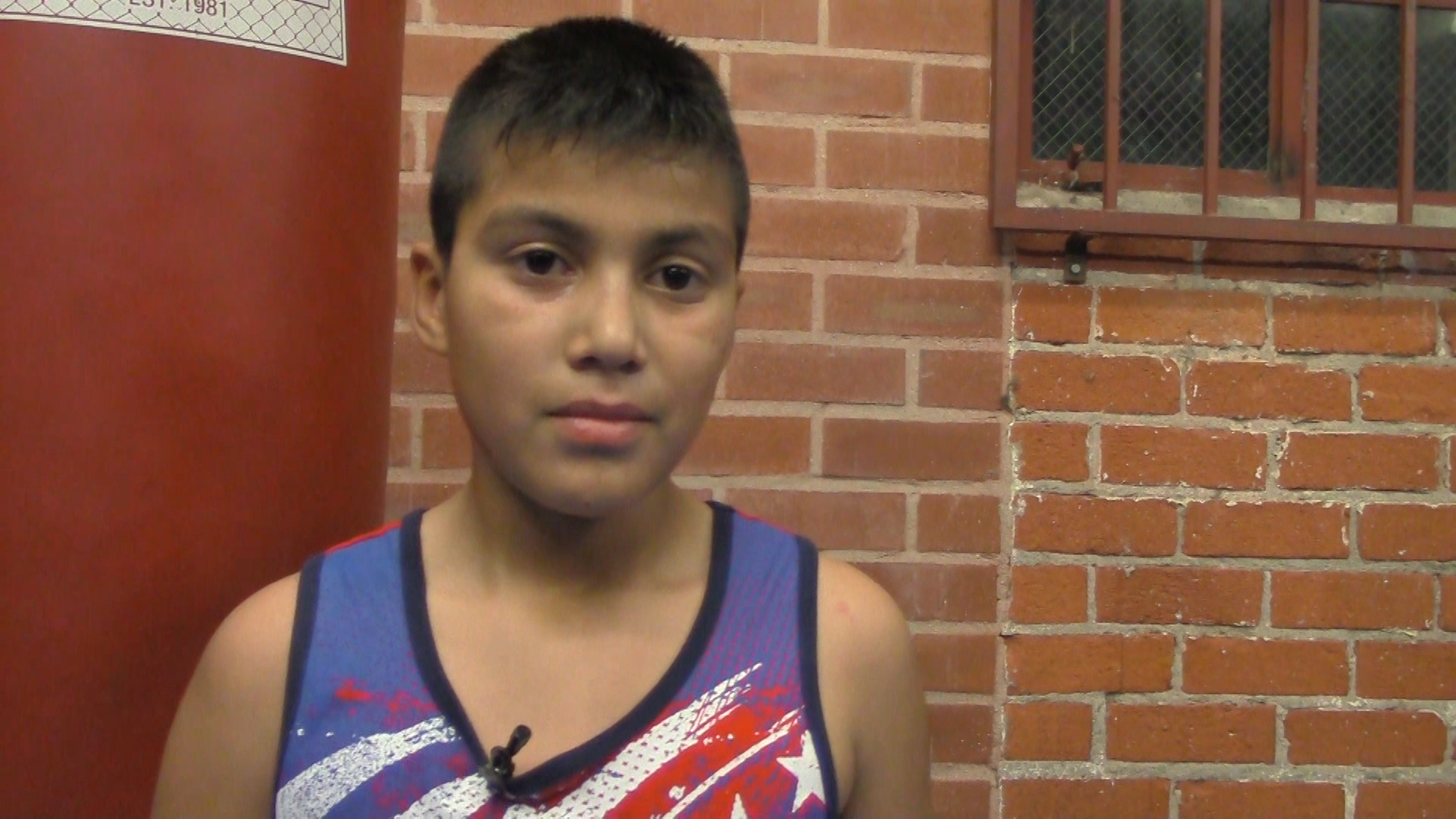
Sanchez, 10, has been training in martial arts since he was 3 years old and has won 97 out of 144 fights.
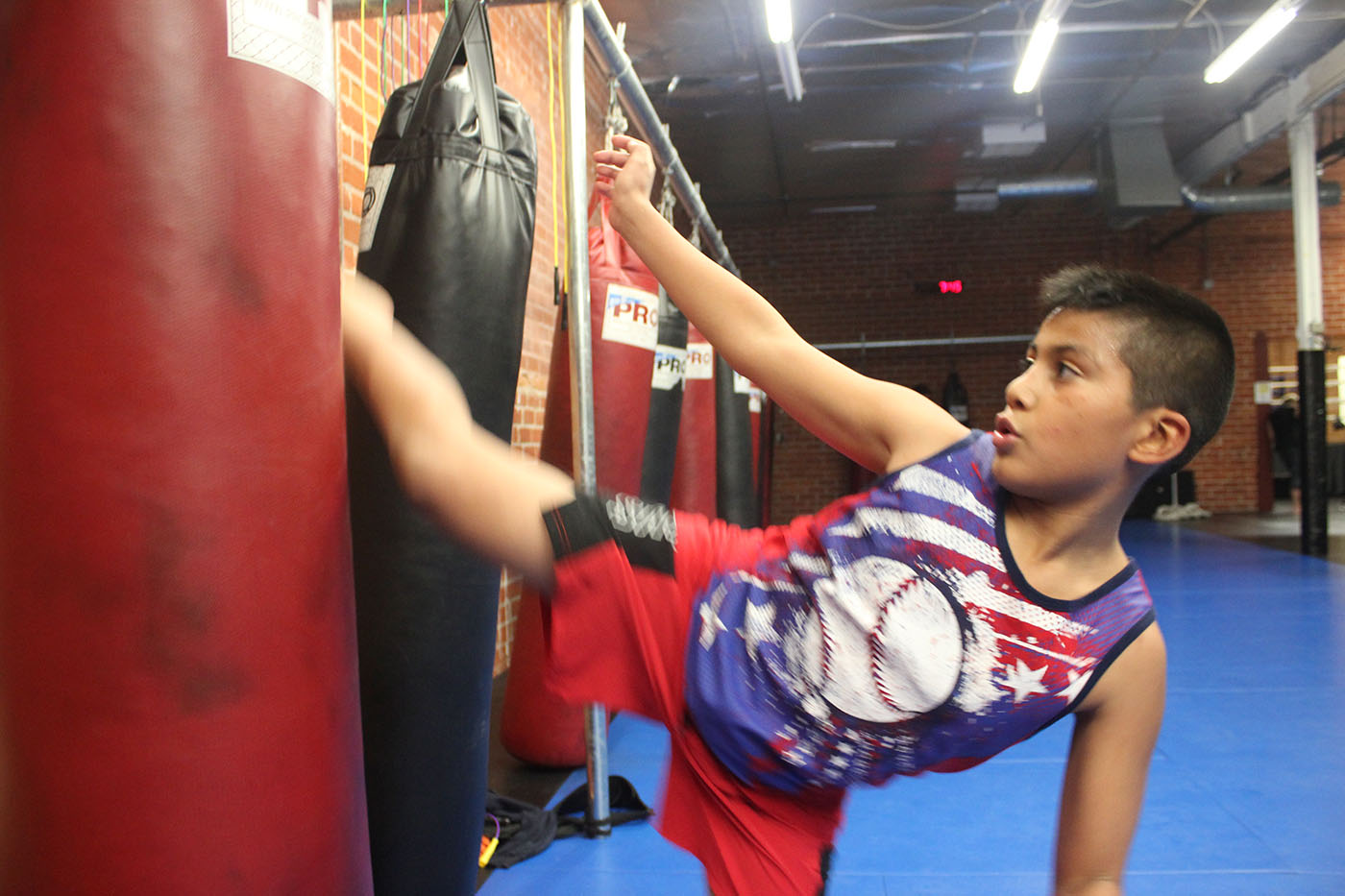 Edvin Sanchez, 10,trains different styles of martial arts. He trains for two to three hours nearly everyday in preparation for his next competition. (Ivana Nguyen/Annenberg Media)
Edvin Sanchez, 10,trains different styles of martial arts. He trains for two to three hours nearly everyday in preparation for his next competition. (Ivana Nguyen/Annenberg Media)
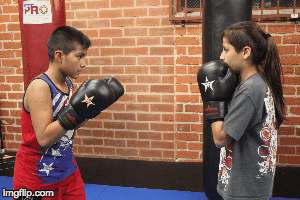 Boys and girls 10 years old or younger are allowed to compete against one another. (Ivana Nguyen/Annenberg Media)
Boys and girls 10 years old or younger are allowed to compete against one another. (Ivana Nguyen/Annenberg Media)
Punching, kicking and screaming are the sounds and sights of a parent’s worst nightmare. But that’s not the case in pankration.
Pankration, or youth mixed martial arts (MMA), is a limited version of adult MMA. It is derived from the Greek words “Pan” and “Kratos,” which translates to “All powers.” Its roots come from the ancient Greek sport that combines boxing and wrestling. In Greek mythology, Hercules and Theseus invented pankration to fight opponents.
But pankration has evolved since its ancient origins. It is a combination of wrestling, boxing, grappling and mixed martial arts. The risk of injuries has sparked debate about whether young children should be able to compete in an intense and physical sport.
Although pankration maintains different rules for young athletes, it is still a full-contact sport. According to ESPN , as of 2011, the most recent figures available, there are about 30,000 MMA schools in the United States, with 5.5 million teenagers and 3.2 million kids under the age of 13 participating in the sport. Both boys and girls compete.
In a video of pankration competition between then 10-year-old Aalijah Pineda and a young male competitor, Pineda took a blow to the jaw. Although they were both wearing gloves, neither of them wore headgear. This move is considered an illegal strike, but accidents happen nonetheless.
This particular video from an unknown source caught the attention of Assemblywoman Susan Bonilla (D-Concord), who proposed Assembly Bill 1186 to “protect the health and safety of children who participate in full contact martial arts events.”
“This measure is a priority because it strengthens protections for the health and well-being of our children who enjoy these sports,” Bonilla said in a news release. “Young athletes who participate in unregulated mixed martial arts competitions can be at risk of serious injury.”
In a full-contact sport such as pankration, children are more susceptible to a higher level of injury, said Dr. Jared Vagy, a doctor of physical therapy.
“The most common injuries they run the risk of are the ones that are the most dangerous that people are worried about are some type of head injury -- so concussion or a brain injury and this is not just in mixed martial arts, it runs across the board in almost all sports -- football, soccer, hockey, even skiing, snowboarding,” Vagy said.
On the other hand, children can still benefit from participating in pankration despite the risk of injury.
“The pros, like any sport, you are training, so you’re very disciplined, in a disciplined environment. If you have some aggression, you’re taking it out in a very controlled, regimented manner. There’s also a lot of support within the community, with parents, with the sport itself,” Vagy said.
In 2013, the California State Athletic Commission. or CSAC, sent a “Cease and Desist” letter to all youth pankration events and created a sub-committee to study youth pankration. The sport was banned for a year and half.
The ban ended when California became the first state to adopt regulations for all forms of mixed martial arts involving minors who are 18 years of age or younger. The CSAC approved the United States Fight League to oversee the youth MMA. California Gov. Jerry Brown signed Assembly Bill 1186 in 2014 that is designed to regulate youth in mixed martial arts events.
The new regulations include: Minimum insurance requirements for events and athletes; defining maximum age and weight differentials for competitions; medical staffing and screen requirements; safety equipment requirements for athletes; age based technique and licensing requirements for coaches and officials to include training and background checks.
Moreover, there are special California Reporting requirements. For example, the fight league is required to maintain an injury log that is available to the commission upon request. It is also required to report “significant injuries” or injuries that require emergency medical treatment within two hours of the occurrence.
Dr. Jared Vagy, a doctor of physical therapy, gives his recommendation on what rules and regulations should be implemented to ensure the safety of children in youth pankration.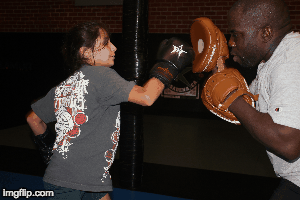 Georgia Slivar performs a punch-kick combination with Coach Young at Pasadena Fight Academy in Pasadena,Calif. (Ivana Nguyen/Annenberg Media)
Georgia Slivar performs a punch-kick combination with Coach Young at Pasadena Fight Academy in Pasadena,Calif. (Ivana Nguyen/Annenberg Media)
The fight league has also implemented strict procedures on both staff and athletes. All athletes are required to be “licensed” in order to compete. In order to compete, athletes are required to take an annual sport physical. Upon competing at an event, the athletes do a pre-fight physical in addition to their annual sports physical. After the match is finished, they take a post-fight exam where any injuries are reported and logged.
Since the state athletic commission delegation in October 2014, there have been 13 youth events and 182 bouts. According to the fight league, there have been eight competition related injuries as identified by the ringside physicians. All identified injuries include the ages of competitors who sustained them.
The eight competition related injuries are: Knee hyperextension (15-years-old), strained thumb (13-years-old), rib contusion (11-years-old), broken arm (16-years-old), hyper-extended elbow (12-years-old), contusion to cheek (8-years-old), strike to thigh (8-years-old), and fractured index finger (12-years-old). Theses injuries are inclusive of both boys and girls.
Statistically, there is a reported injury rate of 4.4 percent over the last year. Although pankration is in its infancy, the rate of injuries is much lower than football or soccer because of supervision, Fight League President Jon Frank said.
“On a football field or soccer field, they have 20 plus kids running around and one or two officials,” Frank said. “In pankration, you have two kids and an adult referee within arms reach at all times and not to mention the physician that’s monitoring them.”
The fight league is one of the biggest organizers in the nation for pankration and was officially delegated responsibility to oversee youth pankration in California. The organization is a “IRS 501c3 non-profit regulatory and sanctioning organization.” Four independent committees govern the fight league: Promoters’ committee, medical advisory committee, referees’ committee and parents’ committee. All staff including Frank are all unpaid volunteers.
“It’s not money making whatsoever and I do it because I believe it’s character building and kind of falls within what I know and what I believe so that’s why I’m pursuing it,” Frank said.
The fight league puts on competitions through promoters.
“They do have to hire the ambulance, they have to pay for the doctor and they pay the per diem for the officials, referees and inspectors,” Frank said. “We cover the kid’s secondary medical insurance policy the business sense is we generate money by the licensing.” Frank said that coaches pay $20 per year for their license and athletes pay $50 per year, which covers “administrative expenses.”
Aside from being the fight league president, Frank is a U.S. marshal who will retire in January.
Official pankration regional training centers across the nation implement the fight league’s ranking system and promote sanctioned shows. The bulk of the training centers is in California, but is also located in Arizona, Colorado, Nevada and Texas. Wisconsin is the next state to sanction fight league pankration.
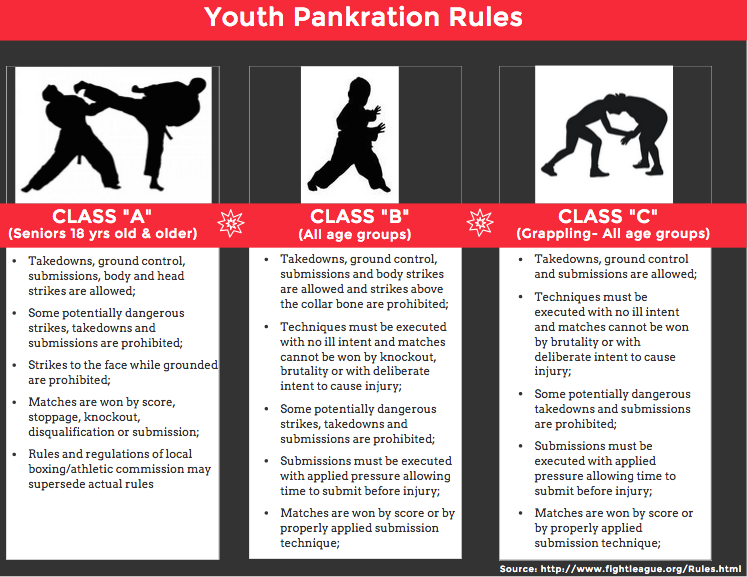 Rules for youth pankration are divided into three classes: "A", "B" and "C."
Rules for youth pankration are divided into three classes: "A", "B" and "C."
The rules and regulations of pankration differ than its adult counterpart. Unlike professional MMA, pankration has a different scoring system. In an effort to improve safety for children, pankration scores are based on technique rather than brutality. Additionally, many moves that are allowed in MMA are banned in youth pankration. For example, any strikes above the collarbone are prohibited. Pankration age ranges from as young as 8-year-old to 11-year-old. All participants who are 10-years-old and younger compete regardless of gender and weight.
The overview of rules are divided into three classes: “A” class rules involve full contact pankration; “B” class rules involve limited contact pankration; and “C” class rules involve grappling only.
“A” class rules apply to senior athletes who are at least 18-years-old or older. Takedowns, ground control, submissions, body and head strikes are allowed. Matches are won by score, stoppage, knockout, disqualification or submission.
“B” class rules apply to all age groups. Due to this fact, rules in this category are the strictest. Matches are only won by score or by properly applied submission technique. In this case, submissions are executed with applied pressure allowing the opponent to submit or tap before injury.
“C” class rules also apply to all age groups. Similar the “B” class, matches are won by score and properly applied submission technique. The only difference is that there are no body strikes in this category.
“Each specific technique is identified and there’s a point value for it and it’s scored in real time at that so the criteria for looking for damaged is removed,” Frank said.
The UFC Rosemead gym offers MMA classes for children. MMA Coaches give their take on what it's like to work with kids.